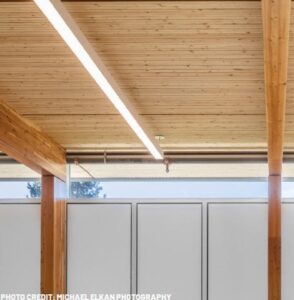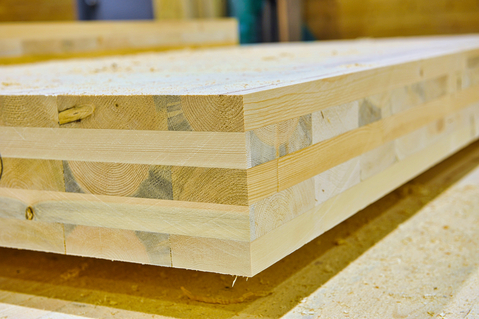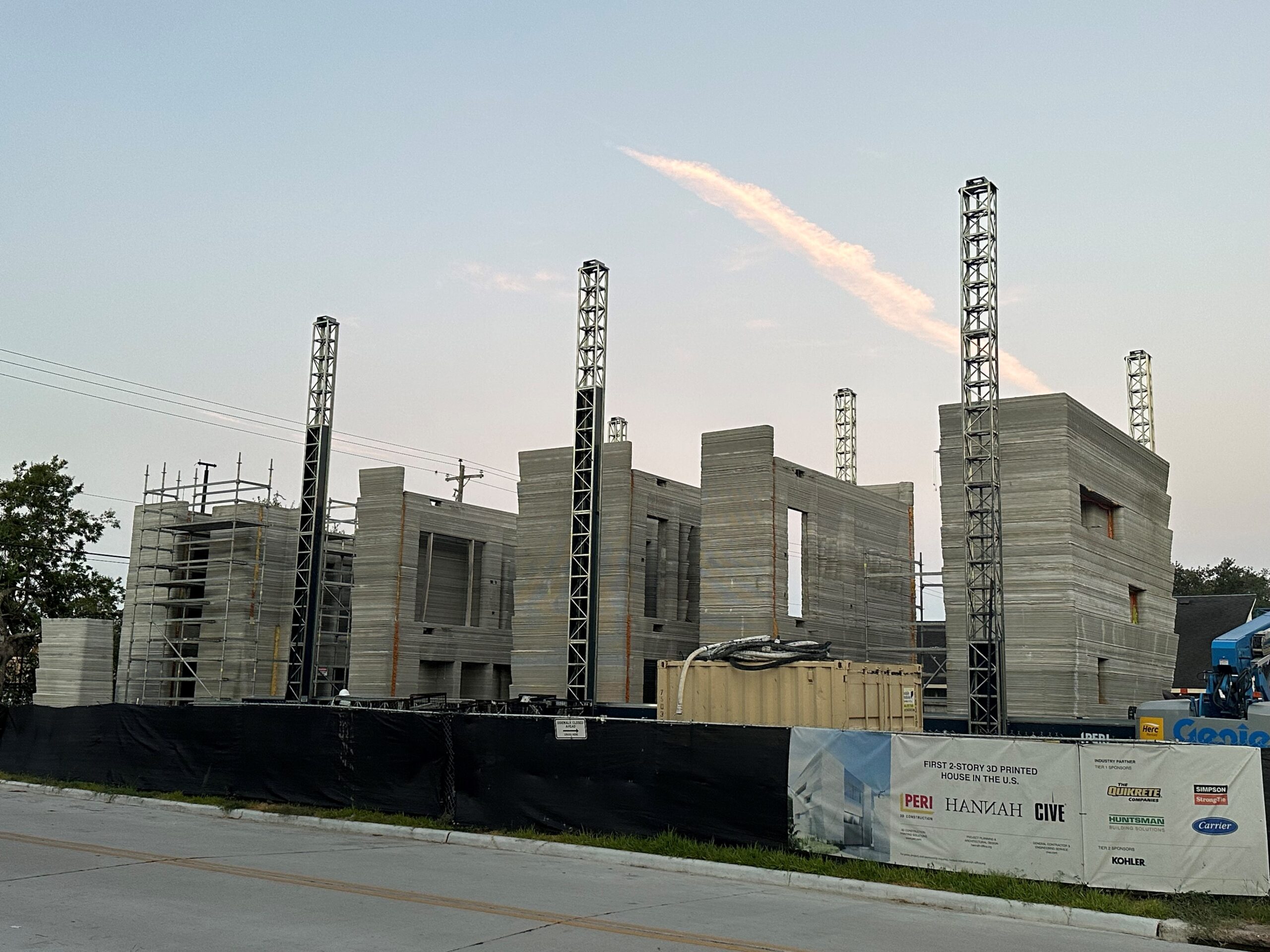How is Nail Laminated Timber Made?
Nail Laminated Timber (NLT) is a mass timber product made by stacking dimensional lumber, typically 2x4s, 2x6s, or 2x8s, side by side and fastening them together with nails or screws. The lumber is arranged with the broad face horizontally, creating a solid panel or beam. This arrangement makes nail laminated timber exceptionally strong and durable.
Is Nail Laminated Timber Environmentally Friendly?
 Like many other engineered woods, NLT has gained popularity as an environmentally friendly and sustainable building material, compared to many traditional lumber, steel, and concrete alternatives. NLT is made from renewable resources, and using sustainably harvested wood helps reduce the overall carbon footprint of a building project. Nail laminated timber is almost exclusively made from fast growing softwood species such as Douglas fir, spruce, pine, or hemlock, though hardwood species can also be used depending on the application and desired properties.
Like many other engineered woods, NLT has gained popularity as an environmentally friendly and sustainable building material, compared to many traditional lumber, steel, and concrete alternatives. NLT is made from renewable resources, and using sustainably harvested wood helps reduce the overall carbon footprint of a building project. Nail laminated timber is almost exclusively made from fast growing softwood species such as Douglas fir, spruce, pine, or hemlock, though hardwood species can also be used depending on the application and desired properties.
Additionally, nail laminated timber and other engineered wood products produce less waste in the manufacturing process than traditional lumber, steel, and concrete alternatives. Even the minimal wood waste can be repurposed or recycled, further minimizing its environmental impact. However, it’s important to ensure that the timber used in NLT is sourced from sustainably managed forests, certified by organizations like the Forest Stewardship Council (FSC) or the Sustainable Forestry Initiative (SFI). Wood harvested responsibly and sustainably contributes to the long-term health of forests and ecosystems.
Another environmental benefit of using sustainably and responsibly sourced lumber over traditional steel and concrete is a process called carbon sequestration. Carbon sequestration occurs when carbon dioxide is removed from the atmosphere by being captured and stored in either solid or liquid form. When trees grow, they absorb carbon dioxide from the atmosphere and store it in their biomass (wood, leaves, roots). Therefore, wood stores carbon that would otherwise be released into the atmosphere as carbon dioxide. When lumber is used in building construction or other long-lasting applications, it effectively locks up the carbon in the wood for an extended period, preventing it from being released back into the atmosphere. This is known as a carbon sink.
Finally, using engineered wood instead of traditional concrete or steel contributes to what is known as the substitution effect. This is because it is replacing more carbon intensive alternatives. Since the production of these materials typically involves high levels of greenhouse gas emissions, using lumber instead can result in lower overall emissions. It is important to note that this is not true for all engineered woods and wood products.
What are the Advantages of Nail Laminated Timber?
 There are many advantages of nail laminated timber, primarily sustainability, fire resistance, efficiency, and strength and durability.
There are many advantages of nail laminated timber, primarily sustainability, fire resistance, efficiency, and strength and durability.
- Fire resistance: Engineered wood products are typically treated with fire-retardant chemicals that, when exposed to heat, release non-combustible gases and form a protective char layer on the surface. This process helps to slow down the spread of fire and allows the structure to maintain its shape and function for longer periods than traditional lumber. It is important to distinguish between a fire-resistant material and a fireproof material. Fire-resistant materials slow down the spread of fire but can still burn or be damaged in high enough temperatures.
- Efficiency: Like dowel laminated timber, nail laminated timber can be prefabricated off-site allowing for speedier more efficient assembly. This can also reduce labor costs and requirements.
- Strength and durability: Nail laminated timber is specifically designed and manufactured to be a strong and durable construction material. It has good structural performance and can support heavy loads. Often used in floors, roofs, and walls, NLT can replace traditional lumber, steel, and concrete in many structural elements both load-bearing and non-load-bearing.
What are the Disadvantages of Nail Laminated Timber?
The primary disadvantage of nail laminated timber is the same disadvantage shared by most engineered woods and engineered wood products: cost. Engineered wood typically costs more than traditional lumber alternatives. However, nail laminated timber can still be a viable construction material for certain applications, especially when used in combination with other materials and appropriate design considerations.






